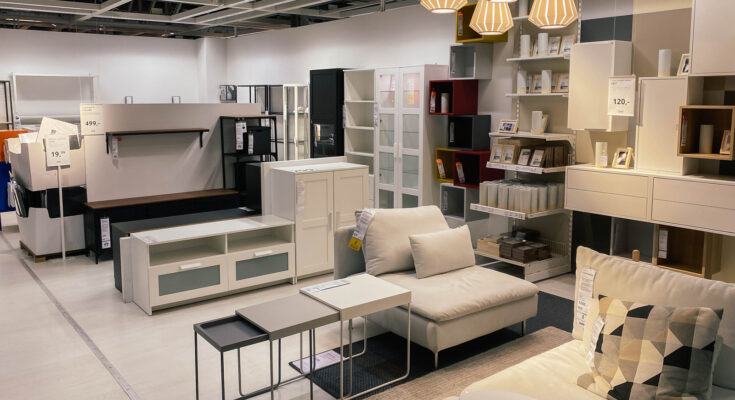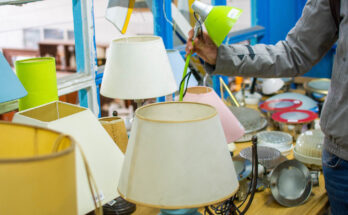Tricks To Make IKEA Pieces Look Like Mid-Century Vintage
IKEA has earned its spot as a beloved home brand for its affordable, functional designs and trendy, wide-ranging collections. However, when it comes to home décor with a vintage charm — it’s not exactly what comes to mind. While some IKEA pieces nod to design from the past, most of their furniture is mass-produced, which means you’re less likely to find that unique, one-of-a-kind feel that comes with antique pieces.
You might not get the same satisfaction with these designs as you would after finding a vintage hidden gem, but the IKEA effect theory does believe you find more value in furniture you’ve built yourself (no matter how frustrating those directions may be). That said, why stop the effort at the end of your instruction booklet? Instead of leaving your design as-is, consider adding a DIY twist that will boost your gratification while giving your pieces some mid-century character through vintage finishes and custom cabinet doors.
One of the best things about IKEA furniture is how adaptable it is — their sleek, simple designs provide the perfect base to add stylish mid-century touches. These easy hacks not only bring that vintage charm to your space, but also transform a piece that’s found in countless other homes into something unique and full of retro flair.
Vintage finishes for IKEA furniture
An IKEA piece doesn’t have to stay the same as it would in the showroom, especially if you’re seeking mid-century charm. Warm teak and walnut wood are some of the most popular choices found in this style, so staining your IKEA furniture with these tones can give it that vintage look. Do note that some pieces in IKEA collections are made with melamine or laminate, which won’t absorb stain well. Staining will work best on natural material items like pine or maple, but the key to staining any furniture is to properly sand the surface first — this makes it easier for the color to stick.
To add some authenticity, you can make IKEA furniture look like genuine wood with a simple paint trick which involves sanding, base coat, and using a dry brush technique to create a wood grain effect. To complement the stains, consider adding some deep, earthy tones to your design. Colors like olive green, mustard yellow, and bold orange were staples in mid-century palettes, so whether you’re painting drawers or refreshing fabrics on your IKEA pieces, these shades are perfect for achieving that classic look.
Once the painting or staining is handled, take a closer look at how certain hardware additions can elevate your design. Swapping out the standard pulls and knobs for something more vintage-inspired, like brass or gold-finished hardware, can make all the difference. Tapered wooden or hairpin legs, painted in brass or gold, are also a classic mid-century touch that’s easy to add.
Mid-century cabinet door upgrades for IKEA pieces
One of the best places to look for a potential mid-century furniture refresh are the cabinet doors of your IKEA pieces. They’re often easy to replace and refashion with some easy hacks, and take up a majority of the visual design. For example, consider custom arches with MDF boards on BILLY doors, and use slatted wood on doors to make hidden wardrobes. It gives the pieces a makeover you’d more likely see in a mid-century magazine, rather than an IKEA showroom. These updates emphasize the organic, sometimes curvy shapes that are often found in mid-century design, taking the look from mass-produced modern to vintage and timeless.
Another way to upgrade IKEA cabinet doors is to introduce some cane webbing — this rustic look was widely used among mid-century furniture styles, and presents a great DIY opportunity for your next project. You can easily turn your IKEA BILLY Bookcase into a trendy woven cane storage cabinet, or any cabinet with glass doors for that matter. Start by removing the cabinet doors and cutting the webbing to fit behind the glass panel, leaving a few inches of overhang — but if you want the cane to be malleable and easy to work with, don’t forget to soak it beforehand and let it dry. Then, you can use a hot glue gun to secure the cane behind the door around the glass frame, while smoothing the material from the middle outwards.
Whether you replace doors with caning or curves, add a little paint or stain, or make a few additional touches to your IKEA pieces, you’ll end up with a mid-century look that will add some unique flair to your home.



